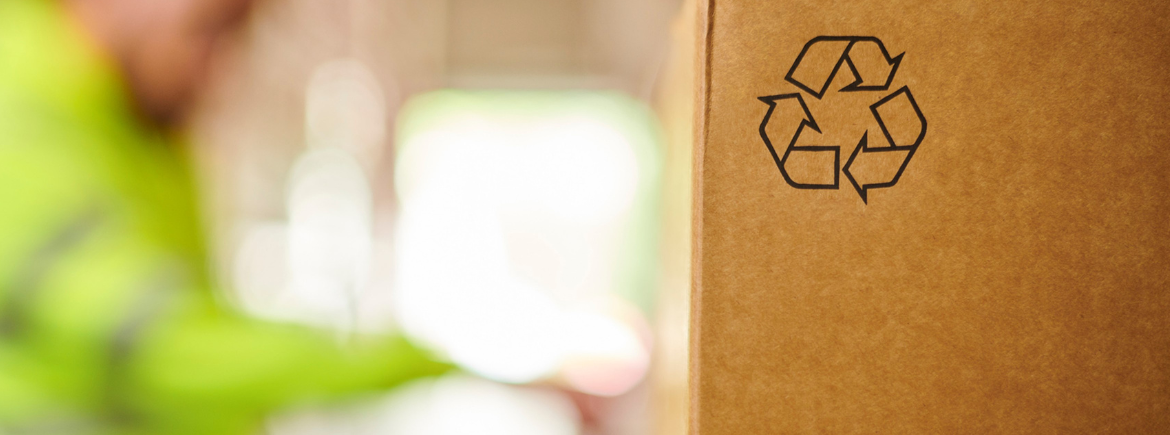8 eco-friendly packaging tips you need to try

With the environment taking a more prominent role in our collective consciousness, businesses are under increasing pressure to adopt eco-friendly practices. And one key area where companies can minimise their environmental impact is packaging materials.
Adopting eco-friendly packaging can align with consumer values and contribute to a healthier planet. So, whether you’re a retailer, distributor or manufacturer, sustainable packaging should form part of your sustainability strategy!
In this article, we’ll explore why eco-friendly packaging is crucial and answer common questions about sustainable packaging. Plus, we’ll provide eight actionable tips for businesses to make their packaging eco-friendlier.
- 1.
- 2.
- 3.
-
4.
8 eco-friendly packaging tips you need to try
- 4.1.
- 4.2.
- 4.3.
- 4.4.
- 4.5.
- 4.6.
- 4.7.
- 4.8.
- 5.

What is eco-friendly packaging?
Eco-friendly packaging is packaging that has minimal impact on the environment and results in improved sustainability. This involves the development and use of the packaging, as well as it’s lifecycle.
The scope of eco-friendly packaging, also referred to as sustainable packaging, will consider the material it is made from. This will include the type of material, whether they are renwable, if it contains recycled content and if the end packaging can be recycled or reused. Ultimately, eco-friendly packaging should reduce environmental impact and have a low ecological footprint.

Why is eco-friendly packaging important?
There are lots of reasons why eco-friendly packaging is important. Packaging that is sustainable can help us protect our planet and support:
Resource conservation
Production of certain packaging materials can drain raw natural resources, like fossil fuels. Making use of recycled materials in packaging production and considering the impact of packaging production can help conserve raw materials for future generations.
Biodiversity protection
Similarly, using natural resources can often have an impact on biodiversity in our environment through actions like deforestation. Reusing materials and minimising the impact of packaging manufacturing can contribute to preventing biodiversity loss.
Climate change mitigation
Climate change mitigation is how we try and prevent climate change. It is difficult to accomplish and there are many complex factors at play, but it involves minimising deforestation and restoring natural habitats until the planet reaches net zero emissions.
Sustainable packaging, that reduces a supply chain’s carbon emissions, can play a role in supporting this goal.

How can I make my packaging more sustainable?
One of the questions we are often asked at Macfarlane is “how can I make my packaging more sustainable?”.
Looking at the full lifecycle of your packaging design and material, right through to how it is transported, stored, packed and shipped can help you identify points for improvement. In addition, considering if the packaging will be reused or recycled will enable to you to minimise its environmental impact.
To help you get started, we’ve put together 8-eco-friendly packaging tips you need to try! These tips can help you improve your packaging sustainability and potentially even reduce your packaging costs.

8 eco-friendly packaging tips you need to try
1. Conducting a packaging review
While many often think of packaging as a commodity product, it can be the key to unlocking environmental and financial savings.
So, a packaging review is a good place to begin making your packaging more sustainable. We recommend reviewing the packaging material you’re using, as well as looking at six key areas that packaging touches in your supply chain:
- Storage
- Transport
- Damages and returns
- Productivity
- Administration
- Customer experience
The CO2 cost of your packaging can be associated to both the material, as well as transport and damages and returns. Using a tool like our Packaging Optimiser can illustrate this and highlight where your sustainability efforts will be most effective.
2. Switching to more sustainable packaging materials
Switching traditional packaging materials with sustainable alternatives can help you reduce your carbon footprint. This might seem like a no brainer – but there are lots of packaging materials available on the market.
The right packaging for you will need to balance product protection with cost and sustainability. Types of packaging you might want to consider include:
- High recycled content packaging materials (like our 100% recycled content double wall boxes or our 50% recycled content air bags).
- Packaging made from renewable resources (e.g. paper cushioning like Geami).
- Compostable packaging and bio-based alternatives. Take note – it’s worth doing your research with packing materials labelled compostable or biodegradable, especially plastic alternatives, as they aren’t all equal and can sometimes need specific conditions to breakdown. Learn more here.
- Packaging that can be easily recycled at kerbside – these materials are more likely to be recycled by end users and therefore can help minimise waste.
3. Reducing Pack Weight to Lower Carbon Emissions
Optimising packaging weight is a simple yet effective strategy to include in your sustainability arsenal. Lighter packages require less energy for transportation, reducing fuel consumption and emissions.
Exploring ways to protect your product during shipping while minimising the amount of packaging material you use can help you achieve lower pack weights. This not only benefits the environment but can also lead to cost savings where you’re paying carriers and hauliers by weight.
4. Optimising Packaging Design for Efficiency
Rethinking your packaging designs with efficiency in mind can benefit your supply chain and the environment.
Streamlined packaging not only reduces material usage but also contributes to a more sustainable supply chain. Consider adopting designs that minimise wasted space, enabling more products to be transported in a single shipment and reducing delivery fleet fuel consumption. This will also have a positive effect in reducing your carbon emissions too.
5. Embracing Minimalism in Packaging
Less is often more when it comes to eco-friendly packaging.
You need to walk the fine line between protecting your product(s) whilst minimising the amount of packaging you use. Embrace minimalism by eliminating unnecessary packaging elements, such as excessive layers or inserts.
Intelligent ways to do this include introducing high-performance packaging materials. These are materials that have been engineered to be lighter or more space efficient but perform at the same high standard of heavier weight material. Alternatively, you could look at reducing the packaging SKUs you use by implementing multi-use packaging that works for many products.
Simplifying packaging not only reduces waste, but also aligns with the preferences of modern consumers who appreciate a clean and straightforward design.
6. Utilising Recycled Content Packaging Materials
We’ve already mentioned that recycled content packaging materials are a good sustainable swap. But why? Well, incorporating recycled content into your packaging materials closes the loop on the recycling process.
Using materials made from post-consumer recycled content, such as recycled paper or cardboard, not only closes the loop, but it can help divert waste from landfill. Manufacturing packaging from recycled content is also less taxing from an emissions point of view. Plus, it helps preserve raw materials.
Click here to learn more about the benefits of recycled content packaging.
7. Encouraging Customer Recycling and Disposal Practices
Do you think about how end users will recycle or repurpose your packaging?
Educate your customers on the eco-friendly features of your packaging and encourage responsible disposal practices. The best way to do this is to clearly communicate how to recycle or properly dispose of the packaging materials by providing recycling instructions.
This might seem like a no brainer, but our latest unboxing research reports that 11% of consumers aren’t sure whether they can recycle packaging due to insufficient labelling.
8. Staying Informed about Evolving Eco-Friendly Solutions
The field of eco-friendly packaging is dynamic, with new innovations emerging regularly.
So, it’s worth staying informed about the latest sustainable packaging solutions and being willing to adapt if needed.
You can stay up to date by subscribing to packaging blogs, visiting packaging-specific news outlets, like Packaging News, or even attending sustainable packaging events relevant to your industry.

Summary
As businesses navigate the evolving landscape of consumer expectations and environmental responsibility, adopting eco-friendly packaging practices is not just a choice but a necessity.
The eight tips provided in this article offer actionable insights that can help you make your packaging more sustainable and enable you to contribute to a healthier planet. From completing a packaging review through to using recycled content materials and reducing your pack weight, the environment can benefit from these changes, and so can you as they can often drive cost savings.
If you need help making your packaging more sustainable, why not get in touch with one of our experts?
